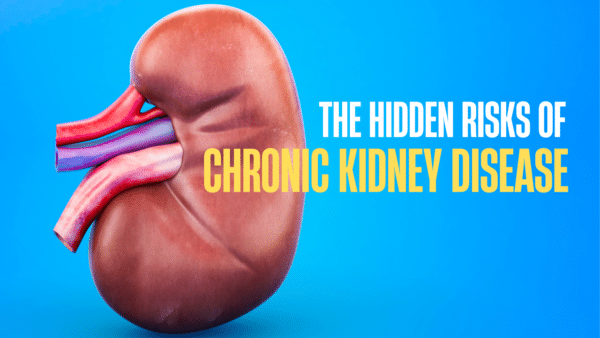Cancer Detection and Prevention
April is cancer awareness month and Walk-In Lab would like to share a few facts about this disease, including cancer’s causes and methods for detecting and preventing it.
What the Cells May Not Tell You
Just the word “cancer” seizes our attention on an emotional level. Yet the physical cancer cells in our bodies can be silent, subtle and masked by other symptoms in the early stages. Cancer does not always announce itself in the ways that we would prefer to be alerted. We can die of other causes before our cancer is detected.
Cancer is defined as the uncontrolled growth of abnormal cells that form tumors, damage normal tissue, and that may eventually spread. Detection and early prevention are the keys to cancer-free living.
Just as banks install alarm systems to prevent and deter robberies, there are convenient and inexpensive ways for the Body Financial to alert you when there is a problem. Testing for and knowing cancer warning signs and risk factors early is essential.
Consider the costs. It is estimated that over 700,000 men are diagnosed with cancer each year and nearly 300,000 die of it. Over the course of a lifetime, half of all men will get cancer at least once. Most of these cancers and deaths are preventable. At least one-third of cancer deaths are caused by smoking and another third may be caused by poor diet and a lack of exercise. The most common types of cancer diagnosed in women are breast, lung and colon cancer, cancer of the uterus, Non-Hodgkin Lymphoma, skin melanomas, thyroid, ovarian and pancreatic cancers. According to the American Cancer Society, the approximate lifetime risk of developing cancer is 1-in-3 for women.
Dedicate Yourself to Early Detection
Name the type of cancer and there is compelling evidence that the cancer may not be providing strong evidence that it exists or that it is spreading within an organ or to other organs, in a process known as metastasis. Currently, less than 20 percent of ovarian cancers are found in the early stages before they have spread outside the ovary. The primary reason they go undetected is that the symptoms of ovarian cancer are fairly non-specific. Cancer that develops in the prostate may stay localized, entirely contained within the prostate for many years and cause few noticeable symptoms. Most cases of prostate cancer are slow-growing, and symptoms begin to emerge only when the tumor mass grows large enough to constrict the urethra. While testicular cancer is one of the most curable forms of cancer with a cure rate exceeding 90 percent, most types of testicular cancer can spread if left unchecked, invading and damaging the other testicle, or spreading to the lymph nodes, lungs or other organs.
Consider the Connections: Colon Cancer
Cancer is not isolated from the body, like oil from water. In your body, there is little that stands or acts alone. Our body systems are far too complex and co-dependent to allow one thing biologically to be separate from another.
Before you focus on the “CANCER” – it’s as important to know what our organs and sophisticated systems provide for us in terms of healthy, active lifestyle. Consider the colon, five feet of phenomenal functionality. The colon is responsible for absorbing water, vitamins, and minerals from the intestinal contents and conserving them. It also mixes the intestinal contents, forms stools, and rids the body of undigested material.
Colon and rectum cancers are sometimes referred to together as colorectal cancer, the third most common cancer in adults and the second leading cause of cancer deaths in men and women in the U.S. . Most cases of colon cancer begin with the development of benign polyps, small growths that protrude into the intestinal cavity. These polyps are common in people over age 50 and most remain benign. Some, however, can become cancerous, invading colon tissues and spreading to other parts of the body. The tumors they form can create blockages in the intestine, preventing elimination.
Confronting the potential for colon cancer, a blood test for carcinoembryonic antigen (CEA) may be helpful for early detection. This protein is increased in many people with colon cancer, and blood levels generally correlate with the stage of the disease. CEA testing also can help in determining prognosis, as increased concentrations are associated with an increased risk of recurrence and development of metastatic disease. Order a colon cancer test.
Ovarian Cancer
Cancer of the ovaries is the fifth most common cause of cancer death in women. The American Cancer Society estimates the life-time risk of developing ovarian cancer is 1 in 71, with 21,000 new cases are diagnosed each year in the U.S..
Invasive ovarian cancer is a more common cause of death than the more prevalent and easily detected cancers of the uterus and cervix. The non-specific symptoms of ovarian cancer include: abdominal discomfort, pressure, bloating, or swelling, urinary urgency and/or change in bowel habits, pelvic pain and discomfort, loss of appetite, indigestion, gas or nausea.
Ovarian tumors can be benign or malignant. It is not usually possible to tell whether a tumor is cancerous until the ovary has been biopsied or removed or the cancer has spread to other parts of the body. The main risk factor for ovarian cancer is a positive family history. Ovarian Cancer Screening includes testing for elevated levels of the cancer antigen CA-125, known as the essential ovarian cancer marker. Also, high levels of Alpha-Fetoprotein (AFP) can strongly suggest presence of germinating cancer of the ovary.
Pancreatic Cancer
Most pancreatic cancers develop in the pancreatic ducts. Pancreatic cancer is the fourth-leading cause of cancer death in the U.S., primarily because only about 10 percent of the cancers are still contained within the pancreas at the time of diagnosis.
Endocrine pancreatic tumors are usually less aggressive than exocrine tumors and are detected earlier because they tend to produce excessive amounts of the hormones insulin and glucagon. Exocrine pancreatic tumors are hard to detect at an early stage. Since the pancreas is deep in the body, tumors that develop cannot usually be seen or felt during a physical examination and by the time symptoms develop, the cancer has often spread throughout the pancreas and beyond.
Screening for pancreatic cancer includes testing for a cancer antigen known as CA 19-9. Initially found in patients with colorectal cancer, CA 19-9 has since been observed and used with high rates of pancreatic cancer.
Prostate Cancer
Prostate cancer is the most common cancer in men and the second-leading killer of men behind lung cancer. Prostate cancer generally grows slowly and most men die with prostate cancer rather than from it. Still, prostate cancer kills approximately 30,000 men each year.
Prostate cancer risk is also elevated in men with a family history of the disease and increases in general as men age.
More than 70 percent of all prostate cancers are diagnosed in men over the age of 65. In its early stages, prostate cancer has no apparent symptoms. But detected early, it can be cured.
The total PSA (total prostate specific antigen) blood test, along with a digital rectal exam are the primary tools used to help determine the need for a prostate biopsy. Order a prostate cancer test.
Testicular Cancer
Testicular cancer is an abnormal, uncontrolled growth of cells that form a tumor on one or both testes. Testicular cancer is the most common cancer in males between 20 and 35 years of age. Germ cell tumors account for about 94 percent of testicular cancers. Screening for testicular cancer involves identify tumor markers such as AFP (alpha-fetoprotein) and hCG (human chorionic gonadotropin) that may be elevated.
Liver Cancer
The most common form in the U.S. is hepatocellular carcinoma, cancer that arises from liver cells called hepatocytes. According to the American Cancer Society, this type encompasses about 3 out of 4 cases of primary liver cancer.
Liver cancer does not have symptoms at first, so it is not usually diagnosed in its earliest stages. Those with chronic hepatitis B and C and those with cirrhosis are at an increased risk of developing liver cancer. Many patients with cirrhosis or advanced chronic hepatitis are regularly screened for liver cancer to detect it early, when it may be more treatable. A liver cancer test is focused on levels of AFP (alpha-fetoprotein) to help evaluate risk, diagnose, and monitor for recurrence.
Taking Charge
Many cancers and cancer-related deaths are preventable. Knowing your potential risk of cancer and having the appropriate tests are part of that prevention. There is no way to guarantee that you’ll never get cancer, yet there are a number of steps that could reduce your chances.
You can start by eliminating or reducing your cancer risk factors tied to behavior and consumption, such as smoking, chewing tobacco, drinking more than two alcoholic drinks per day, not exercising, eating a high-fat diet. You are also at risk if you have a family history of cancer or you have had cancer previously, if you are age 55 or older or have other genetic factors that increase the likelihood of cancer.
Specific cancers have identified risk factors. For example, pancreatic cancer is associated with males over 50 years old, smokers, with diabetes, chronic pancreatitis, and heavy occupational exposure to certain chemicals and dyes. Prostate cancer has been linked to factors such as high fat diet, obesity, smoking and a lack of exercise.
Diet remains a key ingredient to preventing cancer or reducing cancer risk, and you’ll benefit heart health, weight management and anti-aging improvements while you’re at it. Eat a low-fat, high-fiber diet with lots of fruits, vegetables, and whole grains. Fiber, soy protein, fruits, and cooked tomatoes have all been shown to reduce prostate cancer risk. High-fat, low-fiber diets are at least partly responsible for most prostate and colorectal cancers. They also increase the risk of pancreatic and bladder cancers. Limit foods that are smoked, salted, pickled, or high in nitrates, including hot dogs and luncheon meats, as these foods are associated with increased risk of stomach cancer.
Nothing in your body occurs in isolation. Invest the time getting to know your body and what it is telling you. Invest in the early-stage screenings and know the age and other risk factor guidelines for cancer tests, especially if you have family history or a number of risk factors. Having any abnormalities addressed or cleared can give you the confidence to pursue optimal health, and the peace of mind that comes from the knowledge that you can only treat those diseases that you know about. Across the board, reducing the cancer odds pays off.
Shop cancer screenings online from the privacy of your home without a doctor’s visit or prescription.

